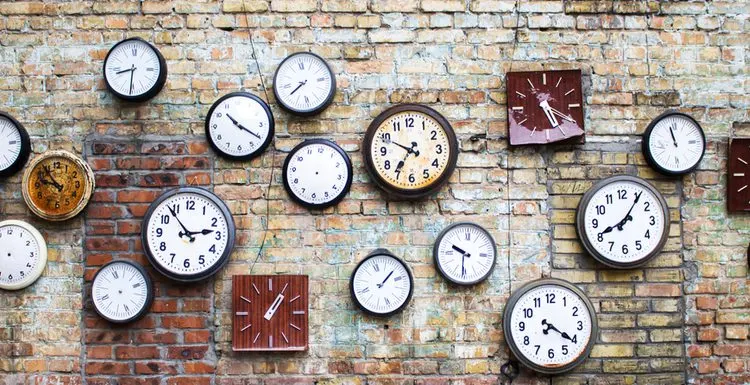Are you looking for a clock but aren’t sure what to buy?
While all clocks tell time, they don’t all have the same shape, power needs, and features.
Broadly speaking, there are four main types of clocks:
- Analog
- Digital
- Mechanical
- Battery- or electric-powered
Categories aren’t mutually exclusive. For instance, a clock with hands that needs a battery is a battery-powered analog clock.
The Different Types of Clocks in Detail
From classic to modern and everything in between, here’s a closer look at the different types of clocks available.
We’ve rounded up the most popular clock types below:
1. Analog
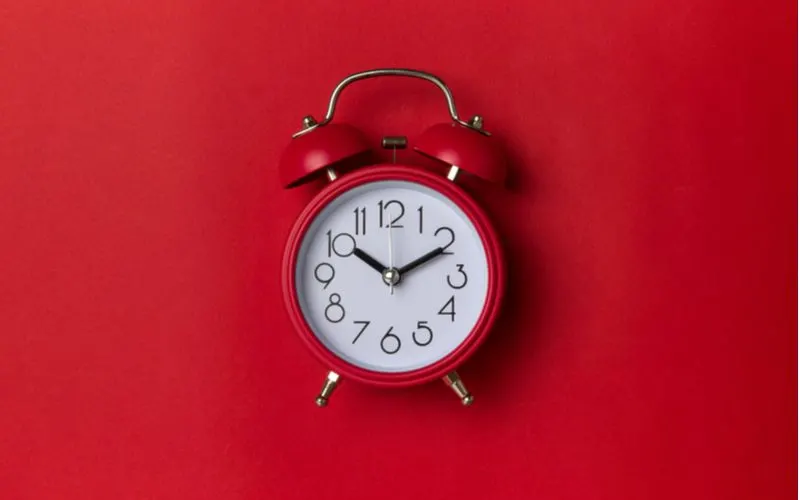
Mogilami/Shutterstock
An analog clock is a classic that can’t be beaten. Analogs are the type of clocks with hands. The short hand indicates the hours, and the longer one signifies the minutes. Some analog clocks even have a second hand that speeds along non-stop.
You’ll find analog clocks just about everywhere, from homes to businesses and more. Simple, round analogs are in offices and schools around the world.
They range in style from simple to incredibly complex. You can find analogs with Arabic numerals, Roman numerals, or even no numbers at all. When selecting an analog clock, you want to consider its style, total size, number size, weight, and power needs.
2. Digital
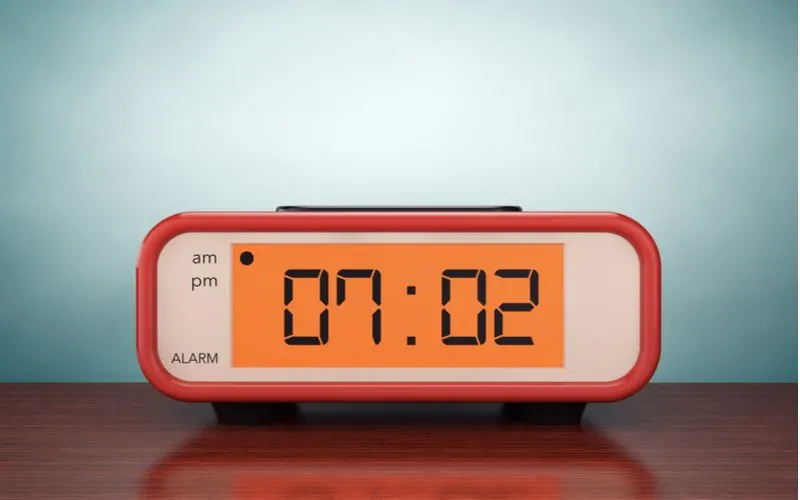
Doomu/Shutterstock
A digital clock is another popular type. They have a digital display for the numbers. Instead of hands, the time is displayed via numbers on a screen, such as an LCD or LED.
While certain types of digital clocks have existed since the 1800s, the modern digital clock was patented in the US in 1956 by D.E. Protzmann. During the same year, the digital watch was also patented.
Most digital clocks are powered by a battery or cord connected to a wall outlet, but not always. Some digital clocks are mechanical. Typically, a mechanical digital clock is an artisanal creation.
3. Electronic Word Clock
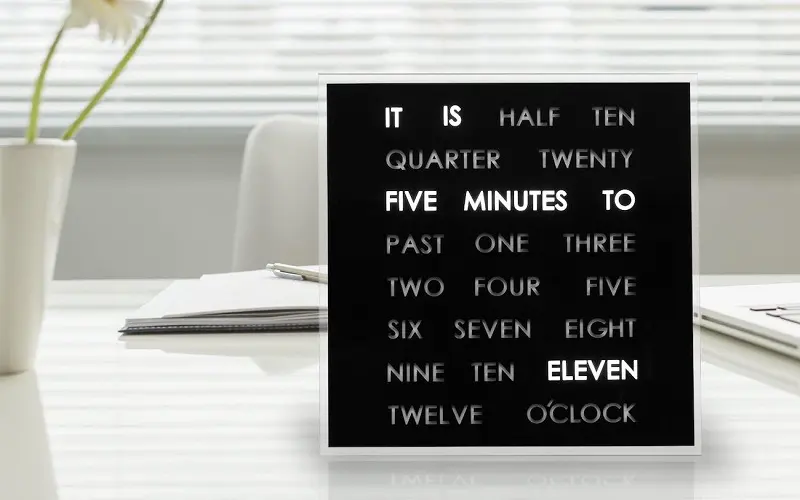
Image/Pinterest.com
An electric word clock has a digital display, but it doesn’t show numbers. Instead, the face displays the time in a written format. For instance, it could say “six o’clock” or “six fifteen pm.”
Word clocks are often used by people with poor eyesight. Written words are often easier to see than numbers. Sometimes, numbers such as eights and threes can blur together, making it difficult to tell time, especially from a distance.
The main potential drawback is that some of these clocks can take up a lot of space. As you’d expect, a clock that displays words such as “four thirty-five pm” requires a fairly long front display screen.
4. Multi-Display Clock
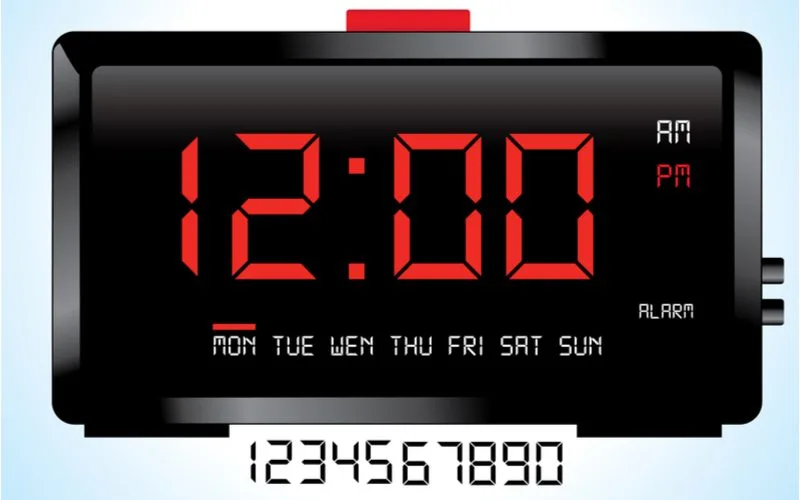
Antun Hirsman/Shutterstock
A multi-display clock shows the time and more. Other types of information typically displayed include:
- Date
- Day of the Week
- Temperature
More intricate models will display multiple time zones, including maritime (a time used at sea). Some types of multi-display clocks show all the information on the screen at once.
And others have a button that you push to cycle through different displays. The cycle type is useful if you want to minimize information you only need occasionally, such as other time zones.
5. Auditory
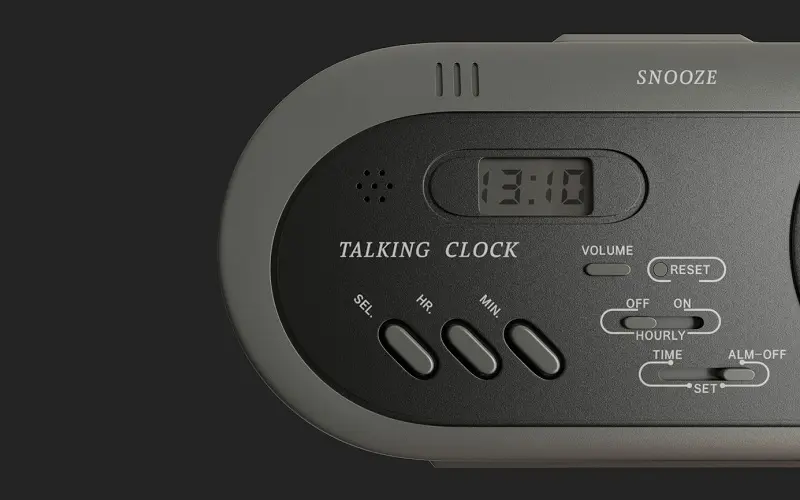
Image/artstation.com
Instead of displaying time visually, some clocks tell the time using sound. They can speak the time in a voice, either a recording of a human voice or a computer-generated one. They can also make noises, such as ringing or chiming.
Some auditory clocks only make noise when you press a button. Other types make noise automatically, such as church bells and grandfather clocks.
Auditory clocks are great in two main situations. They’re helpful (and sometimes necessary) for people with impaired vision. Auditory clocks are also a good choice in large, public places where people can’t necessarily see a clock easily, such as a train station.
6. Atomic
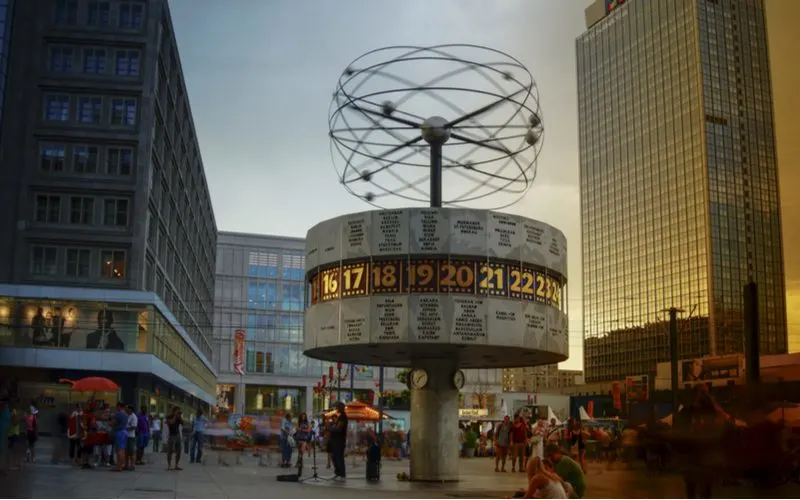
Bote/Shutterstock
An atomic clock is the most accurate type of clock in the world. They use a quartz crystal oscillator to tell time by detecting electromagnetic radiation. They’re only off by one second every 10 million years.
Atomic clocks are used by NASA on GPS satellites that orbit the planet and explore deep space. But they also have uses closer to home. They’re found in smartphones and electric power grids.
7. Mechanical
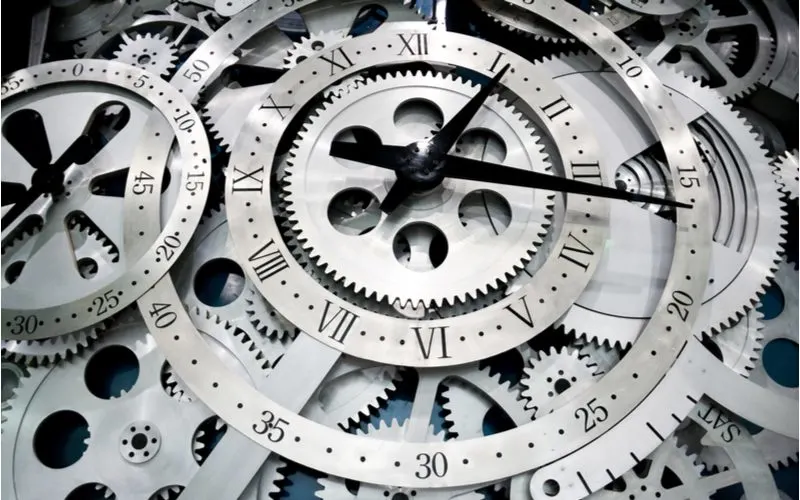
Yuyangc/Shutterstock
Mechanical clocks are incredibly common. They use a tightly wound spring to gauge the passing of time.
The spring stores energy, which it then releases steadily to transfer power to various gears, which then move the hands or turn numbered dials.
Mechanical clocks require winding, usually once every 24 hours. Otherwise, they don’t keep time accurately and possibly might stop working entirely.
8. Pendulum Clocks
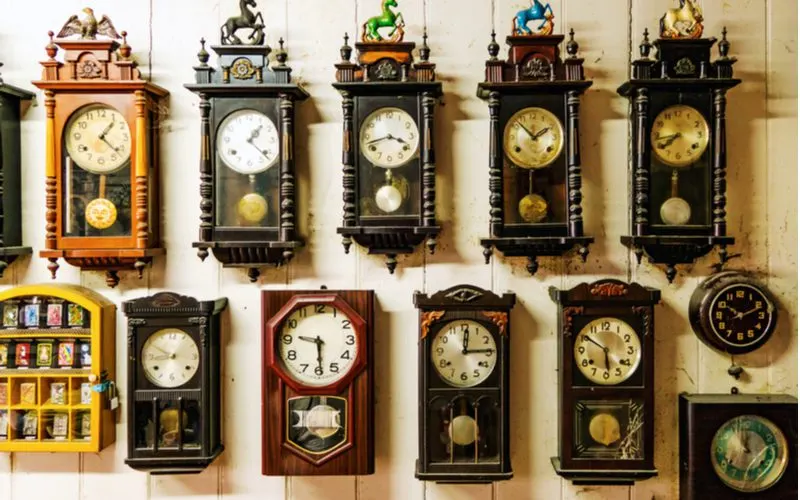
PotatoTomato/Shutterstock
The pendulum clock is one of the oldest types. Introduced in the 1600s, these ingeniously designed clocks use physics principles to keep time, requiring no electricity. Pendulum clocks use wide pointers powered by gravity to track the passage of time.
While the original platinum clocks were usually quite large, today you can find them in many sizes, including compact options.
Keep in mind that pendulum clocks do require special care. They need regular winding. Also, excessive temperatures can affect their housing, which can decrease their accuracy.
9. Cuckoo
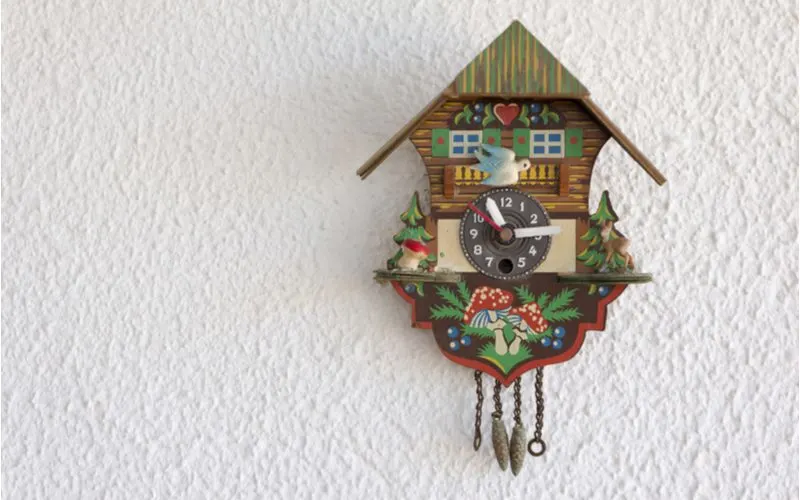
Vicenfoto/Shutterstock
Is any clock more fun than a cuckoo clock? In the traditional type, a little wooden bird emerges from a hidden door to give out a cuckoo call.
The number of calls indicates the hour. Cuckoo clocks date back to the early 1600s.They originated in the Black Forest region of Germany, an area home to cuckoo clock artisans even today.
While the original type of clock features a cuckoo bird, you’ll find no shortage of variations, including licensed characters.
Things to Consider
When selecting a clock for your home, office, or another location, consider the following:
- Style: Choose a clock that matches the look and tone of the environment. For professional situations, you might want a clock with a subtle, simple look.
- Size: A big clock takes up a lot of space, either on the wall or a piece of furniture. However, the bigger the clock, the easier it is to read.
- Placement Location: Walls typically offer more varied placement opportunities than a clock you have to place on a flat surface. However, you do have to make sure your wall clock is securely attached, which means the clock’s weight is a factor.
- Number Type: Do you want a clock with Roman numerals, traditional numbers, or words? Traditional numbers can sometimes be difficult to read from a distance, but they’re also more precise.
- Power Source: A battery-powered clock is more portable than the type with a plug, but replacing batteries can be a hassle.
- Features: Do you want a clock that just tells time, or would you like to see other information, too, such as the date and temperature?
Fortunately, because so many clock options exist, you can almost certainly find whatever combination of features you want.
Frequently Asked Questions
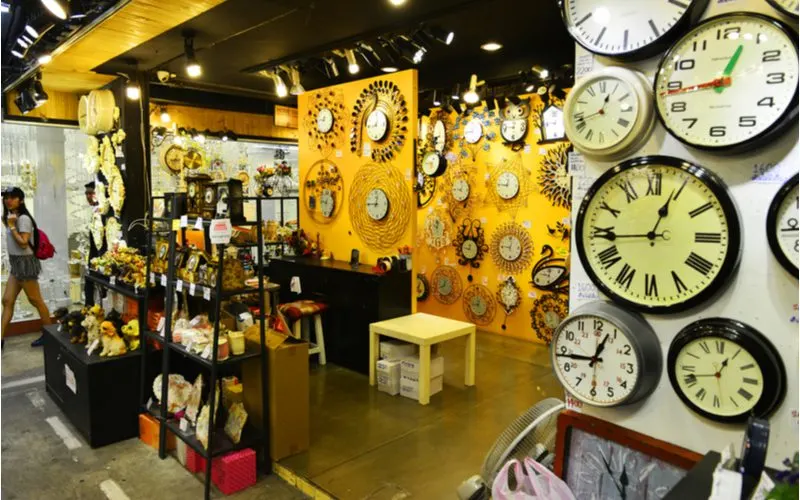
i viewfinder/Shutterstock
Here are some quick answers to the most popular queries about the different types of clocks:
What are the Two Main Clock Types?
While you’ll find a variety of clocks, the biggest distinction is whether they’re analog or digital. Analog clocks have hands while digital clocks display numbers on a screen.
Both types of clocks can be powered by either battery, electricity, or internal mechanics (although mechanical digital clocks are rare).
What Features Can Clocks Have?
Many clocks do more than tell time. They can also display the date, temperature, time in different time zones, and so on. Also, clocks can have alarms, play music, and read the time aloud.
What are Old Clocks Called?
Generally, when people refer to old clocks, they’re referring to grandfather clocks. These tall, free-standing clocks keep time using kinetic energy via oscillating components. Their name was popularized in an 1875 song by Henry Clay Work.
What Type of Clocks are Easiest to See?
The larger the clock face, the easier it is to see, especially from far away. Many people find that clocks with hands are easy to read as even someone with poor vision can determine the approximate time based on the position of the hands.
Other types of clocks that are easy to see include clocks that project the time on a wall and ones that write out the time in letters (such as “four-thirty pm”).
Should I Hang My Clock on the Wall?
Wall clocks take up less space than the type that requires a desk or table. If you want a large clock, but don’t want to sacrifice any of your workspaces, a wall clock is a good option.
However, they do require more work to hang. You’ll need to put a nail or hook into the wall, which might not be an option where you live. Also, the fastener must be strong enough to hold the clock securely.
Closing Thoughts
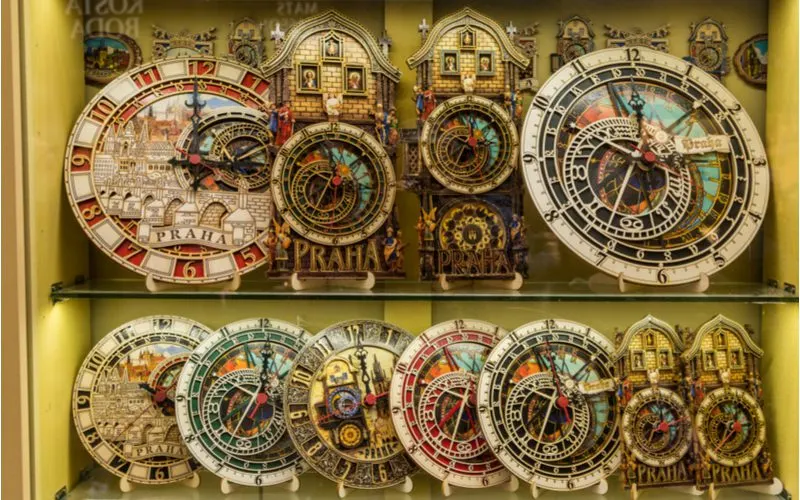
Michael Warwick/Shutterstock
Both desktop and wall-mounted clocks display the time with either numbers or hands.
Internally, clocks have several different operating mechanisms, including atomic, electric, mechanical, and quartz.
When you understand the different clock types, you can find the perfect option every time!

